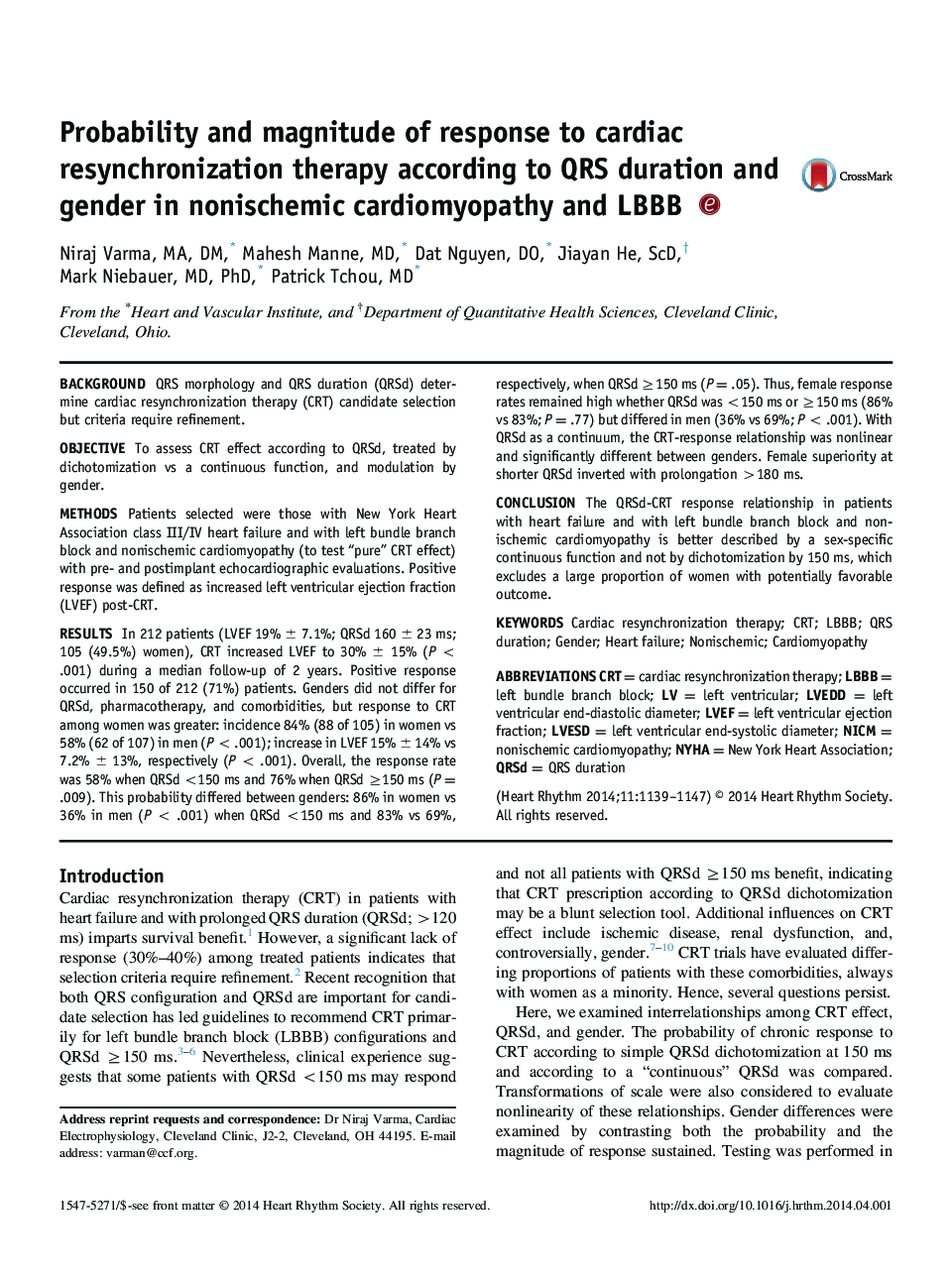| کد مقاله | کد نشریه | سال انتشار | مقاله انگلیسی | نسخه تمام متن |
|---|---|---|---|---|
| 2921990 | 1175825 | 2014 | 9 صفحه PDF | دانلود رایگان |

BackgroundQRS morphology and QRS duration (QRSd) determine cardiac resynchronization therapy (CRT) candidate selection but criteria require refinement.ObjectiveTo assess CRT effect according to QRSd, treated by dichotomization vs a continuous function, and modulation by gender.MethodsPatients selected were those with New York Heart Association class III/IV heart failure and with left bundle branch block and nonischemic cardiomyopathy (to test “pure” CRT effect) with pre- and postimplant echocardiographic evaluations. Positive response was defined as increased left ventricular ejection fraction (LVEF) post-CRT.ResultsIn 212 patients (LVEF 19% ± 7.1%; QRSd 160 ± 23 ms; 105 (49.5%) women), CRT increased LVEF to 30% ± 15% (P < .001) during a median follow-up of 2 years. Positive response occurred in 150 of 212 (71%) patients. Genders did not differ for QRSd, pharmacotherapy, and comorbidities, but response to CRT among women was greater: incidence 84% (88 of 105) in women vs 58% (62 of 107) in men (P < .001); increase in LVEF 15% ± 14% vs 7.2% ± 13%, respectively (P < .001). Overall, the response rate was 58% when QRSd <150 ms and 76% when QRSd ≥150 ms (P = .009). This probability differed between genders: 86% in women vs 36% in men (P < .001) when QRSd <150 ms and 83% vs 69%, respectively, when QRSd ≥150 ms (P = .05). Thus, female response rates remained high whether QRSd was <150 ms or ≥150 ms (86% vs 83%; P = .77) but differed in men (36% vs 69%; P < .001). With QRSd as a continuum, the CRT-response relationship was nonlinear and significantly different between genders. Female superiority at shorter QRSd inverted with prolongation >180 ms.ConclusionThe QRSd-CRT response relationship in patients with heart failure and with left bundle branch block and nonischemic cardiomyopathy is better described by a sex-specific continuous function and not by dichotomization by 150 ms, which excludes a large proportion of women with potentially favorable outcome.
Journal: Heart Rhythm - Volume 11, Issue 7, July 2014, Pages 1139–1147